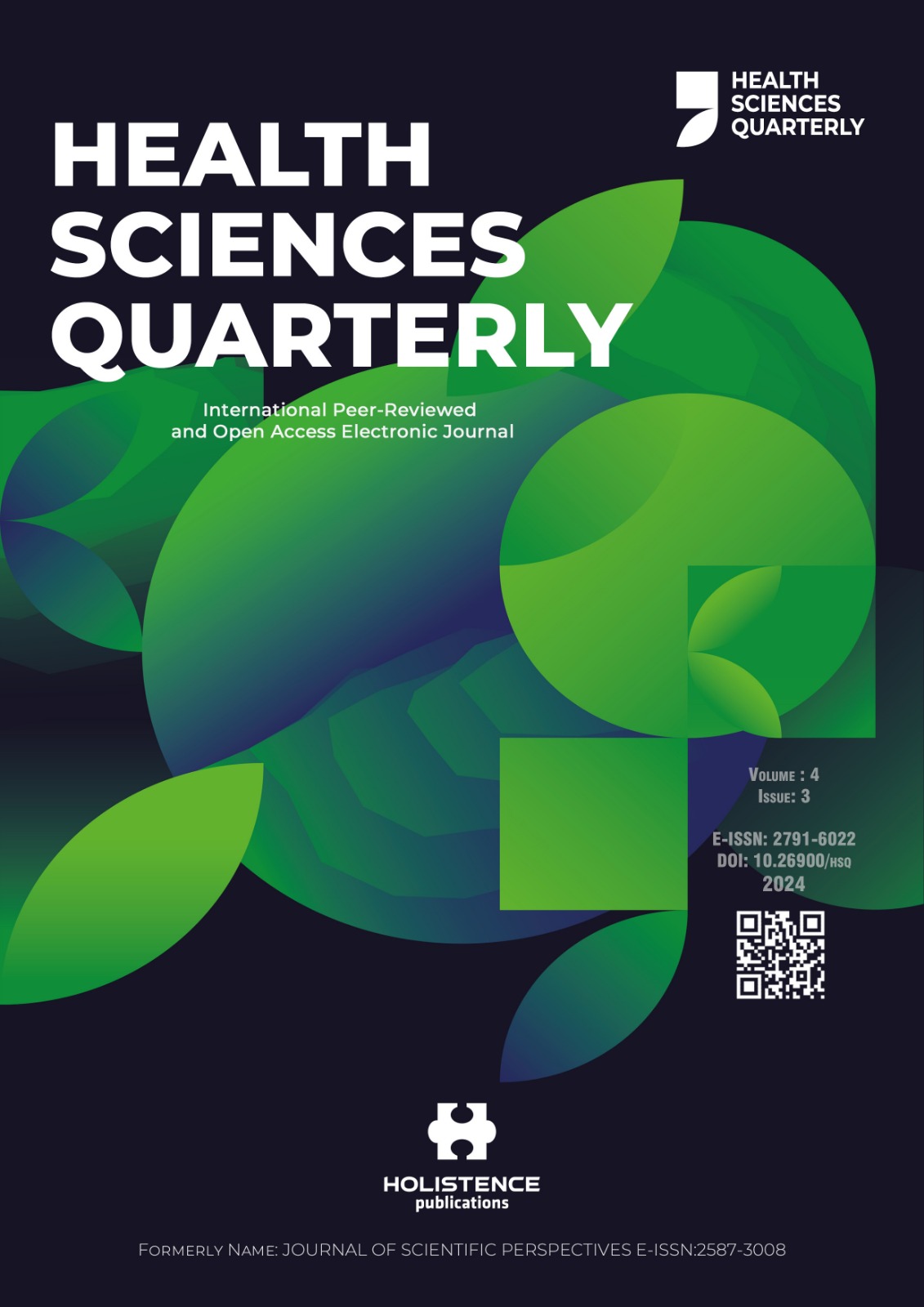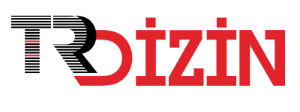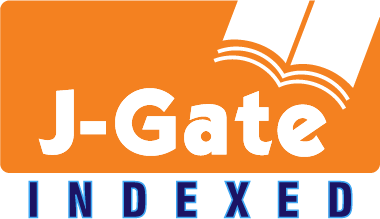The relationship of nurses’ best practice examples with organizational resilience in combating the COVID-19 pandemic: The case of a state hospital
DOI:
https://doi.org/10.26900/hsq.2286Keywords:
Resilience, COVID-19, nursing, best practicesAbstract
The purpose of this research, it is to determine the relationship between nurses’ best practice examples and organizational resilience in the COVID-19 process. This is a mixed methodology research (qualitative and quantitative). The sample of the study consists of 193 nurses. 3 themes, 6 categories and 27 codes representing best practice examples were identified in the qualitative phase of the research. In the quantitative phase of the research; while the nurses’ strategic awareness score is 3925, adaptability score is 5361 and integrity score is 4397, the total score is 13683. The research identified 27 examples of best practice. It was found that the level of organizational resilience of nurses was high and there was a significant relationship between the level of education of nurses and the level of strategic awareness and between time in the profession and the level of strategic awareness, adaptability and integrity. A similar relationship was found between nurses’ best practice examples and organizational resilience levels during the COVID-19 pandemic.
Downloads
References
Rahi K. Indicators to assess organizational resilience–a review of empirical literature. IJDRBE. 2019;10 (2/3): 85-98. doi:10.1108/IJDRBE-11-2018-0046. DOI: https://doi.org/10.1108/IJDRBE-11-2018-0046
Tortorella GL, Fogliatto FS, Saurin TA, Tonetto LM, McFarlane D. Contributions of healthcare 4.0 digital applications to the resilience of healthcare organizations during the COVID-19 outbreak. IJITM. 2021;111 (102379):1-17. doi: 10.1016/j.technovation.2021.102379. DOI: https://doi.org/10.1016/j.technovation.2021.102379
Sujan, M. A SAFETY-II perspective on organizational learning in healthcare organisations: Comment on false dawns and new horizons in patient safety research and practice. IJHPM. 2018;7 (7):662-666 doi: 10.15171/ijhpm.2018.16. DOI: https://doi.org/10.15171/ijhpm.2018.16
Terlemez, B. The effect of interprofessional collaboration and conflict on the team efficiency. PhD Thesis. Marmara University Institute of Social Sciences. İstanbul; 2022.
Fietz B, Hillmann J, Guenther E. Cultural effects on organizational resilience: Evidence from the NAFTA region. Schmalenbach Z Betriebswirtsch Forsch. 2021;73 (1):5-46. doi: 10.1007/s41471-021-00106-8. DOI: https://doi.org/10.1007/s41471-021-00106-8
Rangachari P, L Woods J. Preserving organizational resilience, patient safety, and staff retention during COVID-19 requires a holistic consideration of the psychological safety of healthcare workers. Int J Environ Res Public Health. 2020; 17/12: 4267. doi: 10.3390/ijerph17124267. DOI: https://doi.org/10.3390/ijerph17124267
Turenne CP, Gautier L, Degroote S, Guillard E, Chabrol F, Ridde V. Conceptual analysis of health systems resilience: a scoping review. Social Science & Medicine. 2019;232:168–180. doi:10.1016/j.socscimed.2019.04.020. DOI: https://doi.org/10.1016/j.socscimed.2019.04.020
Zajac S, Woods A, Tannenbaum S, Salas E, Holladay CL. Overcoming challenges to teamwork in healthcare: a team effectiveness framework and evidence-based guidance. Front Commun. 2021;6(6): 1-20. doi: 10.3389/fcomm.2021.606445. DOI: https://doi.org/10.3389/fcomm.2021.606445
Liang F, Cao L. Linking employee resilience with organizational resilience: the roles of coping mechanism and managerial resilience. Psychol Res Behav. 2021;14: 1063-1075. doi: 10.2147/PRBM.S318632. DOI: https://doi.org/10.2147/PRBM.S318632
Braithwaite J, Churruca K, Ellis L. Can we fix the uber-complexities of healthcare? JRSM Open. 2017;1 (10/10): 392-394. doi: 10.1177/0141076817728419. DOI: https://doi.org/10.1177/0141076817728419
Terlemez B, Kocaman E. Örgütsel Dayanıklılık, In: Y. Demir U, Y. Hancıoğlu GY, editors. Organizational Approaches-2, Eskisehir: Nisan Bookstore:; 2020. 86-107.
Kelly N, Blake S, Plunkett A. Learning from excellence in healthcare: a new approach to incident reporting. Arch Dis Child. 2016;101 (9):788-791. doi: 10.1136/archdischild-2015-310021. DOI: https://doi.org/10.1136/archdischild-2015-310021
Eghbali M, Negarandeh N, Froutan R. COVID-19 epidemic: Hospital-level response. Nursing Practice Today. 2020; 7(2): 81-83. doi:10.18502/npt.v7i2.2728. DOI: https://doi.org/10.18502/npt.v7i2.2728
Choi KR, Jeffers KS, Logsdon MC. Nursing and the novel coronavirus: Risks and responsibilities in a global outbreak. J Adv Nurs. 2020;00: 1-2. doi: 10.1111/jan.14369. DOI: https://doi.org/10.1111/jan.14369
Fidan E, Bayraktaroğlu T. Nursing services recommendations in crisis and pandemic. WBSJM. 2020;4 (2), 44-50. doi: 10.29058/mjwbs.2020.2.2. DOI: https://doi.org/10.29058/mjwbs.2020.2.2
Tashakkorı A, Creswell JW. The new era of mixed methods. JMMR. 2007;1 (3):3-7 doi: 10.1177/2345678906293042. DOI: https://doi.org/10.1177/2345678906293042
Creswell JW, Plano Clark, VL. Designing and conducting mixed methods research. Ankara: Anı Publishing; 2018.
Guest G. Describing mixed methods research: an alternative to typologies. JMMR. 2013;7 (2):141-151. doi: 10.1177/155868981246117. DOI: https://doi.org/10.1177/1558689812461179
Plano Clark VL. Ivankova NV. Mixed methods research-a guide to the field. Ankara: Nobel Publishing; 2018.
Yıldırım A, Şimşek H. Qualitative Research Methods in Social Sciences. Ankara: Seçkin Publishing; 2018.
Karasar N. Scientific research method. Ankara: Nobel Publishing: 2017.
Öztürk A. Investigation of the Relationship between Innovative Trends in Service Innovation and Organizational Resilience in the Health Sector. PhD Thesis, University Institute of Social Sciences. Kocaeli; 2018.
Büyüköztürk Ş, Kılıç-Çakmak E, Akgün Ö, Karadeniz Ş, Demirel F. Scientific research methods. Ankara: Pegem Publishing; 2008.
Yüksel D, Kiremit BY, Aydin GZ. Organizational resilience perception of health care personnel during the COVID-19 pandemic. IJEAS. 2021;7(1): 79-91. doi: 10.29131/uiibd.943983. DOI: https://doi.org/10.29131/uiibd.943983
Berg SH, Aase K. Resilient characteristics as described in empirical studies on health care. In: Wiig, S., Fahlbruch, B., editors. Exploring resilience a scientific journey from practice to theory. Cham: Springer; 2019. 79-87. DOI: https://doi.org/10.1007/978-3-030-03189-3_10
Olcay O. Associating the variables related to innovation with the process of developing organizational resilience. JEIMR. 2022;6 (11): 1-13. doi: 10.31006/gipad.1068200. DOI: https://doi.org/10.31006/gipad.1068200
Hundal GS et al. Lean six sigma as an organizational resilience mechanism in health care during the era of COVID-19. IJLSS. 2020;12 (4): 762-783. ISSN: 2040-4166. DOI: https://doi.org/10.1108/IJLSS-11-2020-0204
Gonçalves L, Sala R, Navarro JB. Resilience and occupational health of health care workers: a moderator analysis of organizational resilience and sociodemographic attributes. Arch Environ Occup Health. 2022;95 (1): 223-232. doi:10.1007/s00420-021-01725-8. DOI: https://doi.org/10.1007/s00420-021-01725-8
Altıntaş M, Özata M. The relationship between organizational resilience and organizational health in educational institutions during the COVID-19 pandemic period. JIUFE. 2022;23 (2): 787-810. doi: 10.17679/inuefd.1062251. DOI: https://doi.org/10.17679/inuefd.1062251
Anderson JE, et al. Multilevel influences on resilient healthcare in six countries: an international comparative study protocol. BMJ Open. 2020;10(12): e039158. doi:10.1136/bmjopen-2020-039158. DOI: https://doi.org/10.1136/bmjopen-2020-039158
Downloads
Published
How to Cite
Issue
Section
License
Copyright (c) 2024 Holistence Publications

This work is licensed under a Creative Commons Attribution 4.0 International License.
When the article is accepted for publication in the HSQ authors transfer all copyright in the article to the Holistence Academy Ar-Ge Yazılım Yayıncılık Eğitim Danışmanlık ve Organizasyon Ticaret Ltd. Şti.The authors reserve all proprietary right other than copyright, such as patent rights.
Everyone who is listed as an author in this article should have made a substantial, direct, intellectual contribution to the work and should take public responsibility for it.
This paper contains works that have not previously published or not under consideration for publication in other journals.















